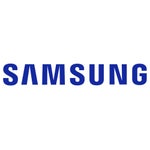News
Snapdragon 8 Gen 5 for Galaxy to Be Manufactured by Samsung, Replacing TSMC
Snapdragon 8 Gen 5 for Galaxy to Be Manufactured by Samsung, Replacing TSMC
Samsung Foundry is poised to reclaim a significant role in Qualcomm's flagship processor manufacturing, marking a pivotal shift in the semiconductor landscape. The upcoming Snapdragon 8 Gen 5 for Galaxy will be produced using Samsung's cutting-edge 2nm Gate-All-Around (GAA) process, representing a dramatic departure from the standard 3nm TSMC-manufactured version.
This development signals the end of Qualcomm's exclusive reliance on Taiwan Semiconductor Manufacturing Company (TSMC) for its premium mobile processors, a partnership that began following yield issues with Samsung's production of the Snapdragon 8 Gen 1 chip in 2022.
The Technical Advantage: 2nm GAA vs 3nm TSMC Manufacturing
Samsung's 2nm Process Specifications
Samsung's 2nm GAA process, built on Multi-Bridge Channel FET (MBCFET) technology, promises substantial improvements over current 3nm nodes. The technology is expected to deliver 50% area reduction and 50% higher performance compared to Samsung's existing 3nm process. This represents a significant leap forward in semiconductor miniaturization and efficiency.
The Gate-All-Around architecture surrounds the channel on all four sides, minimizing current leakage while boosting energy efficiency and performance. This contrasts sharply with the FinFET architecture used in TSMC's 3nm process, potentially giving Samsung a technological edge in the premium smartphone market.
Standard Snapdragon 8 Gen 5 Baseline
For comparison, the standard Snapdragon 8 Gen 5 manufactured by TSMC utilizes the 3nm N3P process and features impressive specifications:
-
CPU Architecture: 2x 4.6GHz Oryon Gen 3 Prime cores + 6x 3.62GHz Performance cores
-
Performance Gains: 20% CPU performance improvement and 35% power efficiency boost
-
GPU: Adreno 840 with 23% graphics performance enhancement
-
AI Processing: 37% faster Hexagon NPU for advanced AI capabilities
The Samsung-manufactured Galaxy variant is expected to exceed these already impressive benchmarks through the advantages of the more advanced 2nm manufacturing process.
Manufacturing Yield Challenges and Industry Implications
Samsung's Yield Rate Progress
Samsung's foundry business has faced persistent challenges with manufacturing yields, a critical factor in chip production economics. Current reports indicate Samsung's 2nm yield rates hover around 40%, significantly lower than TSMC's 60%. However, Samsung is aggressively targeting a 70% yield rate to make mass production commercially viable.
The company has already supplied sample units of the Snapdragon 8 Elite Gen 5 using its 2nm process to Qualcomm for testing and evaluation. These samples represent a crucial step in proving the reliability and performance of Samsung's advanced manufacturing capabilities.
Historical Context and Recovery
The partnership renewal comes after Samsung's challenging experience with the Snapdragon 8 Gen 1, where low yield rates forced Qualcomm to shift production to TSMC starting with the Snapdragon 8+ Gen 1. This setback cost Samsung significant market share in the premium mobile processor segment, with TSMC currently dominating 70% of the foundry market.
Strategic Market Positioning and Device Implementation
Target Devices: Foldables Over Flagships
Contrary to initial speculation about the Galaxy S26 series, recent reports suggest the Snapdragon 8 Gen 5 for Galaxy will primarily target Samsung's 2026 foldable devices, particularly the Galaxy Z Flip 8, launching in summer 2026. This strategic decision allows Samsung to showcase its manufacturing capabilities in its premium foldable lineup while reserving the Galaxy S series for the newly developed Exynos 2600 processor.
The Galaxy S26 series is expected to feature the Exynos 2600 in most global markets, with Snapdragon variants limited to the US and Chinese markets. This dual-processor strategy enables Samsung to reduce component costs while demonstrating confidence in its in-house semiconductor capabilities.
Cost and Competitive Advantages
Samsung's pricing strategy appears aggressive, with reports indicating the company is undercutting TSMC by approximately one-third on 2nm wafer pricing. This competitive pricing, combined with the technological advantages of GAA architecture, positions Samsung to win back major clients beyond Qualcomm.
Industry analysts predict that successful execution of the Snapdragon 8 Gen 5 for Galaxy project could attract additional high-profile customers, including Nintendo for the Switch 2 processor and Tesla for next-generation AI chips.
Industry Impact and Future Outlook
Foundry Market Dynamics
The Samsung-Qualcomm partnership renewal represents more than a single contract; it signals a potential shift in foundry market dynamics. TSMC's dominance has been built on superior yields and reliability, but Samsung's advancement in GAA technology offers a differentiation opportunity that could reshape competitive landscapes.
The success of this partnership could encourage other major semiconductor companies to diversify their manufacturing partnerships, reducing industry dependence on TSMC and creating a more balanced foundry ecosystem.
Timeline and Production Schedule
Mass production of the Snapdragon 8 Gen 5 for Galaxy is expected to commence in Q1 2026, with Samsung allocating production to its cutting-edge Hwaseong S3 fabrication facility. Initial production estimates suggest approximately 1,000 twelve-inch wafers per month, representing about 15% of Samsung's available 2nm capacity.
The relatively modest initial production volume reflects the strategic nature of this partnership, serving as a proof-of-concept for larger future collaborations rather than an immediate high-volume manufacturing relationship.
Technical Performance Expectations
Enhanced Galaxy-Specific Optimizations
The Snapdragon 8 Gen 5 for Galaxy is not expected to be merely an overclocked version of the standard chip. The 2nm GAA manufacturing process should enable:
-
Superior power efficiency through reduced current leakage
-
Enhanced thermal performance critical for compact foldable devices
-
Improved integration with Samsung's proprietary technologies and sensors
-
Optimized performance for Galaxy-specific software features and AI applications
Risk Factors and Challenges
Despite the promising outlook, several challenges remain. Samsung must prove it can consistently achieve the targeted 70% yield rates while maintaining quality standards that meet Qualcomm's specifications. The company's foundry division has struggled with profitability, posting approximately ₩2 trillion in Q1 2025 losses, making successful execution of this partnership crucial for financial recovery.
Additionally, the timeline for mass production leaves little margin for error, with Samsung needing to demonstrate manufacturing reliability before the critical 2026 foldable device launch window.
Related Articles
-
Exynos 2600 Beats Snapdragon 8 Elite in GPU Benchmark – 15% Faster?
-
Snapdragon 8 Elite 2 Smashes Records: 4.74 GHz CPU Clock Speed Dominates Dimensity 9500
-
Qualcomm Snapdragon 8s Gen 4: Unleashing Power with Kryo CPU and Adreno 825 GPU












